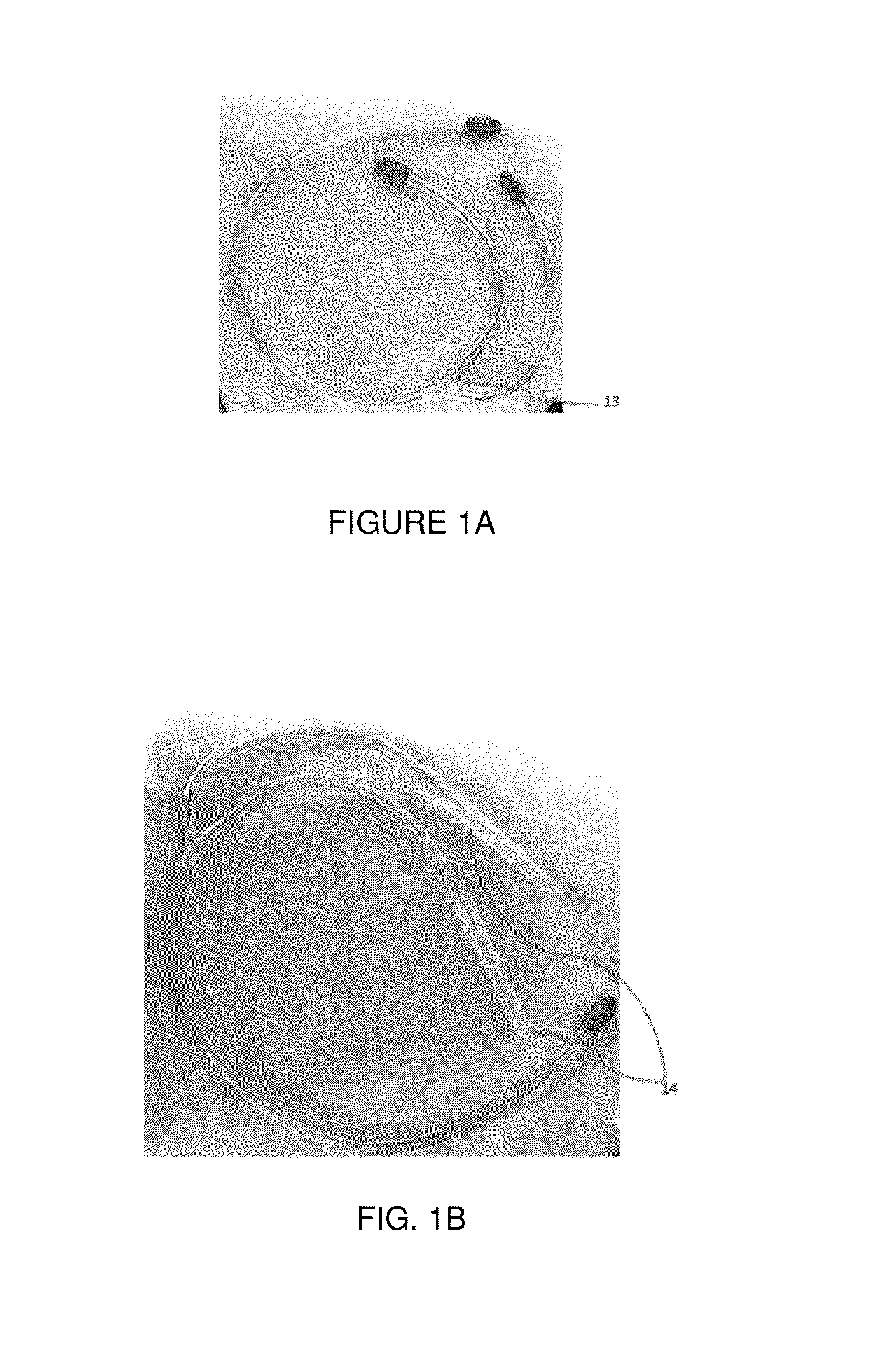Body cavity drainage device and methods for using the same
a drainage device and body cavity technology, applied in the field of body cavity drainage devices, can solve the problems of reducing the effectiveness of peritoneal cancer, reducing/or other agents contained in the solution, and/or the ideal temperature range of the solution, so as to improve the effectiveness of chemotherapeutics, improve the ability of operato, and improve the effect of clogging
- Summary
- Abstract
- Description
- Claims
- Application Information
AI Technical Summary
Benefits of technology
Problems solved by technology
Method used
Image
Examples
Embodiment Construction
[0042]The present invention provides a drainage tube and method that removes fluid from a peritoneal, abdominal, or other body site. The tube has a central internal passageway for the flow of fluids. The tubing has one or more crossholes that extend through the tubing material and provide fluid communication between the passageway of the drain tube and the peritoneal, abdominal, or other body site of a subject.
[0043]Methods and devices for peritoneal, abdominal, or other body cavity drainage are provided.
[0044]Methods and devices for peritoneal, abdominal, or other body cavity drainage that improve flow rate, drainage rate, and clog-free drainage time, while also increasing the ability for an operator to maintain a desired temperature range of a therapeutic solution are provided.
[0045]Methods and devices for treating cancers, tumors, and neoplasms using improved peritoneal, abdominal, or other body cavity drainage, either as a stand-alone treatment or in combination with one or more...
PUM
 Login to View More
Login to View More Abstract
Description
Claims
Application Information
 Login to View More
Login to View More - R&D
- Intellectual Property
- Life Sciences
- Materials
- Tech Scout
- Unparalleled Data Quality
- Higher Quality Content
- 60% Fewer Hallucinations
Browse by: Latest US Patents, China's latest patents, Technical Efficacy Thesaurus, Application Domain, Technology Topic, Popular Technical Reports.
© 2025 PatSnap. All rights reserved.Legal|Privacy policy|Modern Slavery Act Transparency Statement|Sitemap|About US| Contact US: help@patsnap.com



